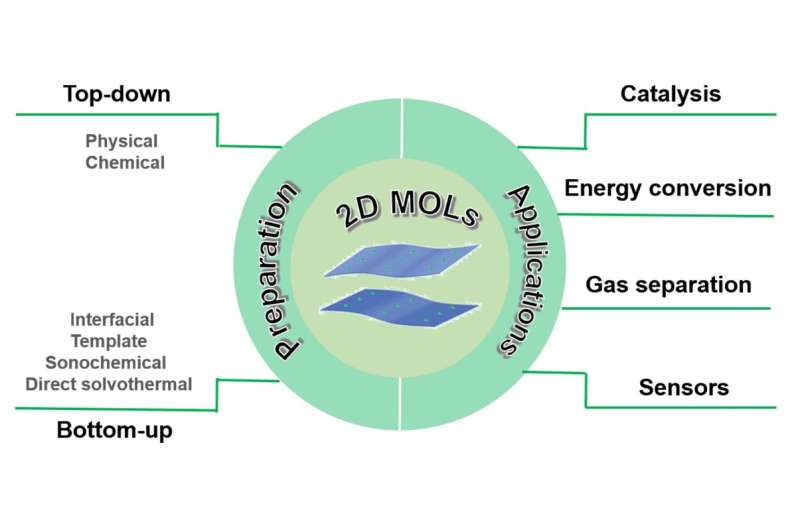This article has been reviewed according to Science X's editorial process and policies. Editors have highlighted the following attributes while ensuring the content's credibility:
fact-checked
trusted source
proofread
Metal-organic layers: Preparation and applications

Metal-organic frameworks (MOFs) made by bridging metal-containing nodes with organic ligands are a type of ordered porous materials. The first case of MOFs reported by Yaghi et al. in 1995 sparked a frenzy in the research on MOFs. The past decade has witnessed the rapid development of such types of materials.
However, because of the limitation on material thickness, their applications in separation, catalysis, and biosensors are inevitably adversely affected. The preparation of two-dimensional (2D) ultrathin MOF nanosheets (also called metal-organic layers (MOLs)) could be an alternative to further enhance or extend the functionalities of MOFs.
In MOLs, active centers are well exposed on the surface, which facilitates the interaction between vibrant centers and substrate molecules, thus, improving their applications in catalysis, gas separation, and sensing. The MOLs are commonly prepared by the top-down or bottom-up method.
The top-down method uses physical or chemical means to exfoliate bulk MOFs into MOLs, whereas the bottom-up method synthesizes 2D MOLs by constraining the growth of MOLs in the third direction. Both methods have been extensively used to prepare 2D ultrathin MOLs with sub-10 nm thicknesses in the past decade.
In this review, the authors thoroughly introduce and discuss the preparation and applications of the newly emerging 2D MOL materials. First, the authors summarize the two synthesis strategies for preparing 2D MOLs. Then, the authors discuss their applications in gas separation, catalysis, energy conversion, and sensing and analyze the relationship between their functions and structures. Finally, the authors present the challenges and opportunities for developing MOL materials in future.
The work is published in the journal Science China Materials.
More information: Huifeng Wang et al, Metal-organic layers: Preparation and applications, Science China Materials (2023). DOI: 10.1007/s40843-022-2316-y
Provided by Science China Press



















